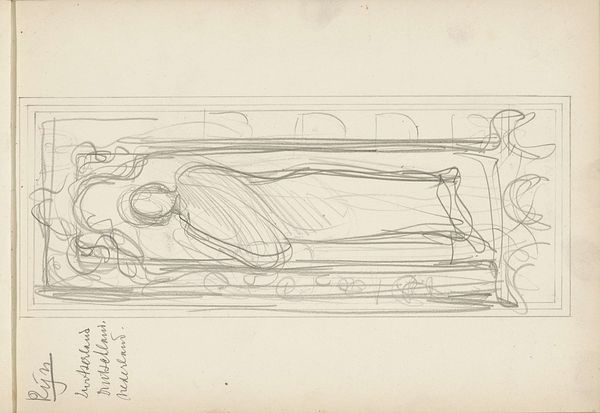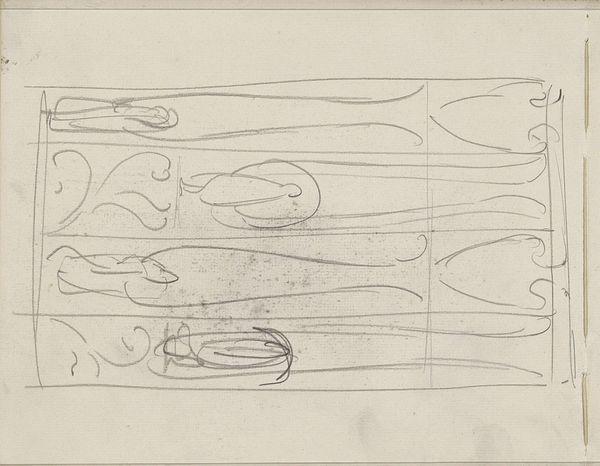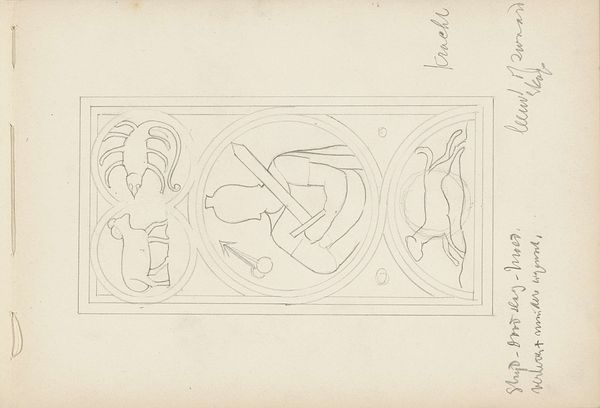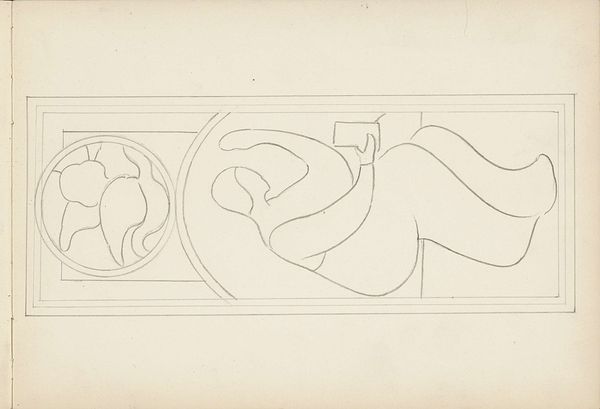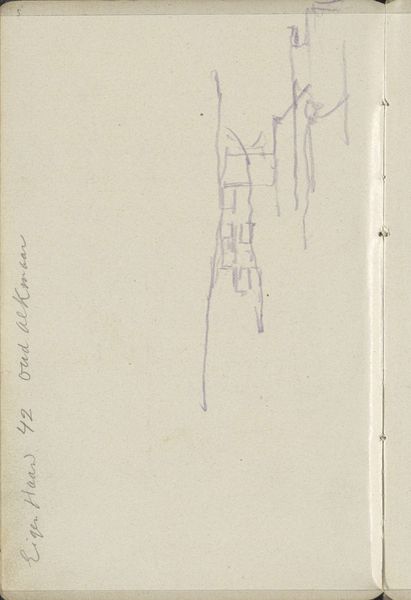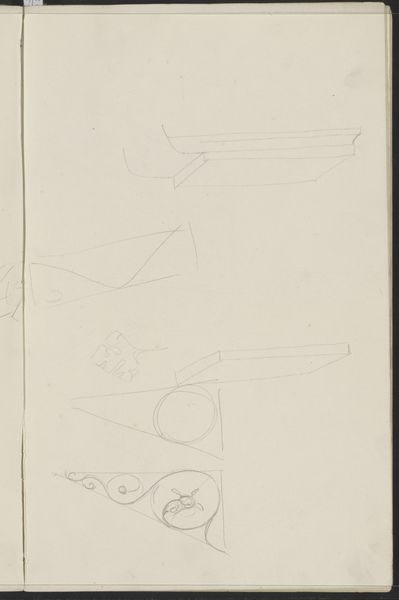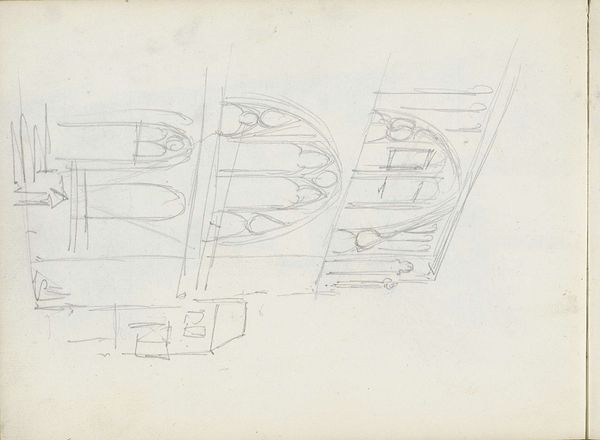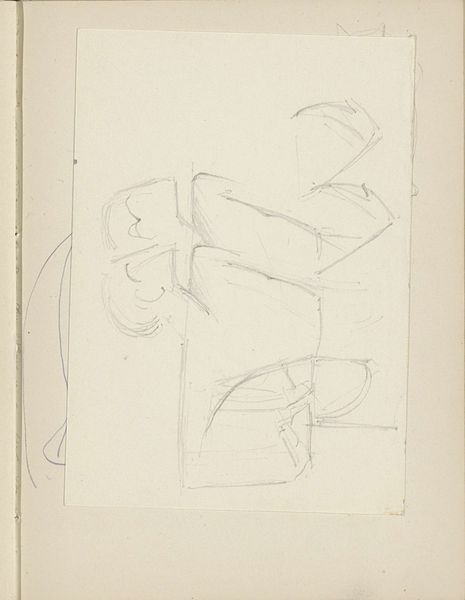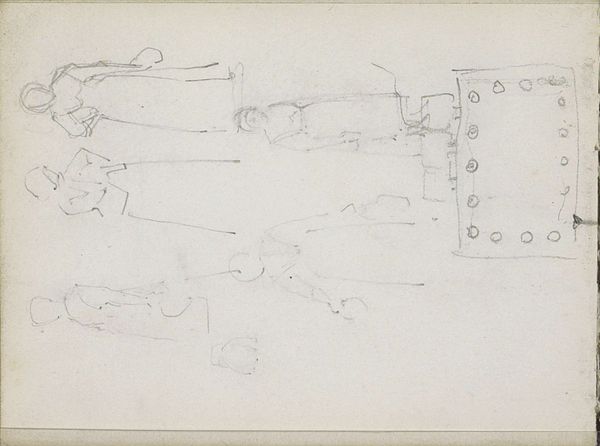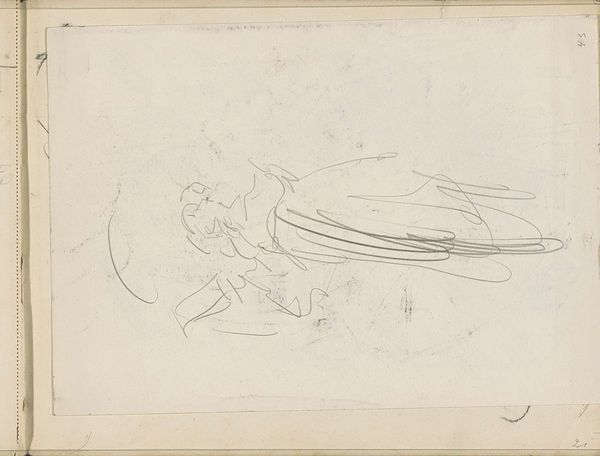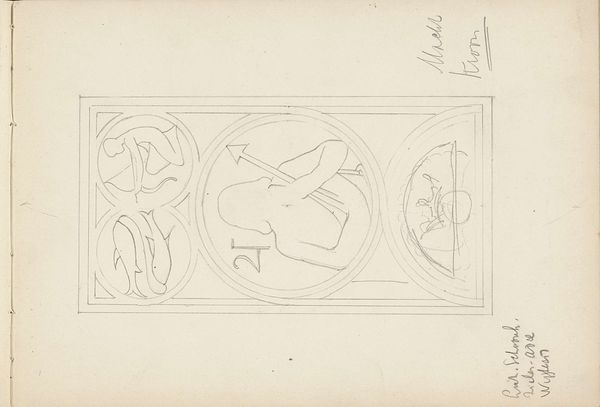
drawing, pencil
#
drawing
#
figuration
#
pencil
#
line
#
symbolism
Copyright: Rijks Museum: Open Domain
Curator: This is Antoon Derkinderen's "Design for a window with personification of the North Sea," made between 1900 and 1903, rendered in pencil on paper. Editor: It's quite stark, isn't it? Almost like an anatomical drawing. There’s a very strong sense of classical influence, I suppose relating to his focus on figuration and line here. Curator: Precisely. As a design for a window, consider the function. Light would have streamed through these precise lines, interacting with the very structure of the window. What statement might the materiality of the design process be trying to communicate, do you think? Editor: Well, Derkinderen situates this piece right at the nexus of industrial production and artistry. By invoking classical themes in a decidedly modern style he really does question our contemporary ideas about Dutch identity and internationalization through visual forms. You almost have to wonder what role gender plays, with a reclined male as the key visual anchor? Curator: That’s fascinating. Gender indeed often served as a loaded concept during this era, linked to narratives of strength and national identity. You’re making me rethink the original use! This was, as we know, intended as the first stage of a physical window, it is essentially a material object itself. I find the materiality—the pencil strokes, the texture of the paper—almost speak of labor and deliberate construction processes Editor: I think that reading into labor and social identity is important! He's evoking a kind of raw power, both in the North Sea and in this figure. How might his identity—being Dutch—color this representation, I wonder? How did Dutch laborers conceptualize their engagement with resources—the sea specifically, and even industrialization, perhaps—at that time? Curator: Absolutely! Contextualizing the creation around available resources of the period opens some doors. Consider the quality of the pencil available in that era and compare its production with materials available now. How does the creation reflect those constraints? Editor: Those parameters really anchor Derkinderen in his particular moment. Thinking about identity in terms of nationality, gender, and class gives the window new context to understand. Curator: Indeed, from considering resources to exploring themes, both elements have unlocked insights today! Editor: Truly a conversation to sea.
Comments
No comments
Be the first to comment and join the conversation on the ultimate creative platform.
